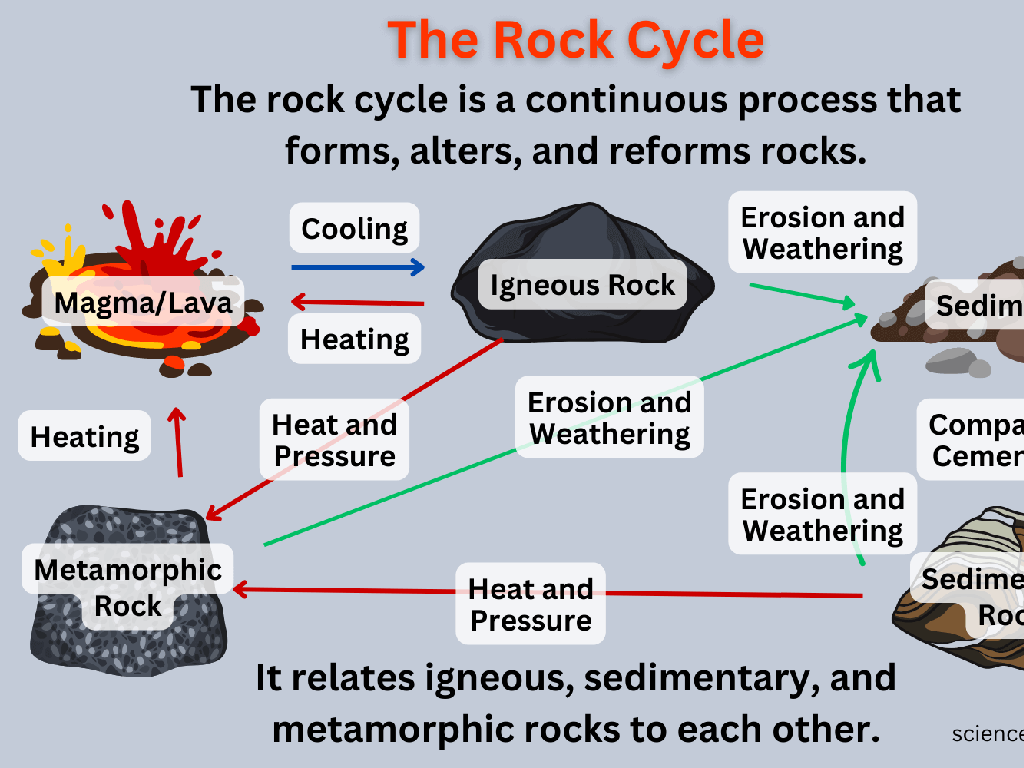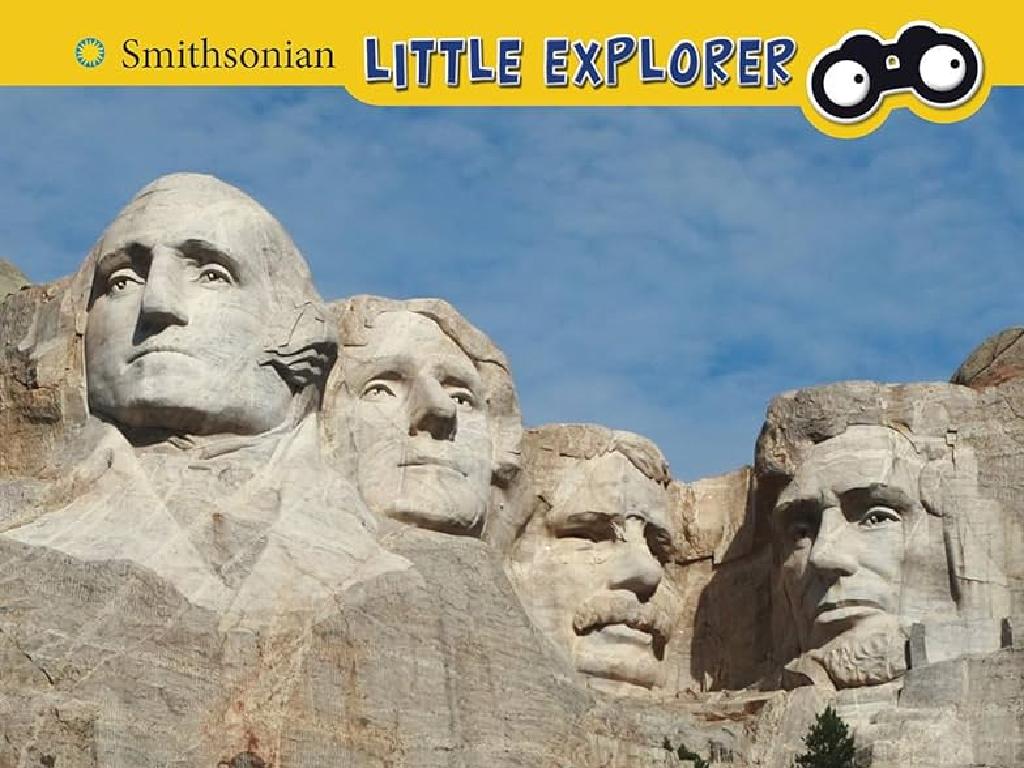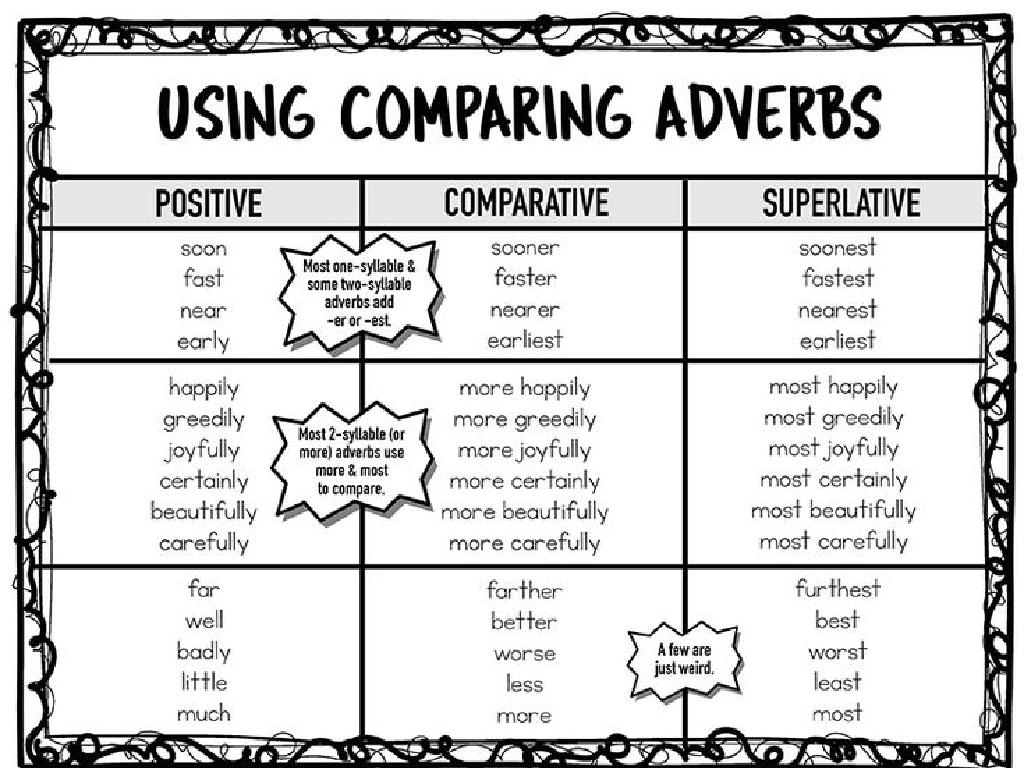Choose The Lowercase Letter That Matches: C, K, O, P, S, U, V, W, X, Z
Subject: Language arts
Grade: Pre-k
Topic: Lowercase And Uppercase Letters
Please LOG IN to download the presentation. Access is available to registered users only.
View More Content
Welcome to Letter Land!
– Greet our Letter Land adventure
– Uppercase vs. lowercase letters
– Big letters are uppercase, small are lowercase
– Two forms for each letter
– Each letter has a big and a small form
– Why different letter forms?
– Different forms used for different reasons
|
Today’s class is an exciting journey into Letter Land, where we will explore the alphabet’s big and small letter forms, known as uppercase and lowercase letters. Explain to the students that every letter has two ways of being written and that each form has its own place and purpose in writing. Uppercase letters typically start sentences and proper nouns, while lowercase letters make up the majority of our writing. Engage the children by asking them to spot the difference between big and small letters and discuss where they might have seen each type used. This foundational knowledge sets the stage for recognizing and writing letters in both forms, a crucial skill in their language development.
Meet the Letters: C and c
– Meet Big ‘C’ and little ‘c’
– ‘C’ is the uppercase, ‘c’ is the lowercase
– ‘C’ is big, ‘c’ is small
– Compare sizes: ‘C’ is like a big cookie, ‘c’ is like a little cookie
– Practice the ‘C’ sound together
– The sound ‘C’ makes is like the start of ‘cat’ or ‘car’
– Find ‘C’ and ‘c’ in words
– Look for ‘C’ and ‘c’ in books or signs around you
|
This slide introduces the letter ‘C’ and its lowercase counterpart ‘c’ to Pre-K students. Start by showing them the visual difference between the uppercase ‘C’ and lowercase ‘c’, perhaps using visual aids like flashcards. Emphasize the size difference by comparing them to objects they are familiar with, like cookies. Practice the sound that ‘C’ makes, using words that start with ‘C’ to illustrate. Encourage the children to make the sound together. Finally, involve the students in an activity where they find the letter ‘C’ and ‘c’ in their environment, such as in books or classroom signs, to reinforce recognition. This interactive approach helps students associate the visual shape and sound of the letter ‘C’ with its usage in everyday language.
Kicking it with ‘K’
– Meet the letter ‘K’ and ‘k’
– ‘K’ is a big letter and ‘k’ is the smaller version
– ‘K’ stands tall, ‘k’ is the little buddy
– Imagine ‘K’ as a parent and ‘k’ as a child
– Practice the ‘K’ sound together
– We say ‘K’ like the sound in ‘kite’ and ‘kangaroo’
– Find ‘K’ and ‘k’ in words around us
– Let’s look for ‘K’ and ‘k’ in books, signs, and at home
|
This slide introduces the uppercase and lowercase versions of the letter ‘K’. Emphasize the visual difference between ‘K’ and ‘k’, with ‘K’ being taller like a parent and ‘k’ as its smaller companion. Engage the children in practicing the ‘K’ sound, ensuring they understand how it is used in words. Encourage them to find and point out both ‘K’ and ‘k’ in their environment, such as in books or street signs, reinforcing their recognition of the letter in different contexts. Prepare to have visual aids like flashcards and alphabet books for the next class to help them identify the letter ‘K’ and ‘k’.
Outstanding ‘O’: Learning Big and Small
– Meet the letter ‘O’ and ‘o’
– ‘O’ is round like a zero
– Big ‘O’ looks like a zero or a donut
– ‘o’ is a little circle
– Little ‘o’ is a small loop, like a cheerio
– Practice the ‘Oo’ sound together
– Say ‘Oo’ as in ‘octopus’ or ‘ostrich’
|
This slide introduces the uppercase and lowercase versions of the letter ‘O’. Emphasize the visual similarity of the uppercase ‘O’ to familiar round objects like zeros or donuts, and the lowercase ‘o’ to small round items like cheerios. Engage the students in practicing the ‘Oo’ sound by using fun and relatable words such as ‘octopus’ and ‘ostrich’. Encourage them to draw big ‘O’s and little ‘o’s in the air with their fingers and on paper to reinforce the shape and sound of the letter. This activity will help them recognize and differentiate between the two forms of the letter ‘O’ and associate it with its sound.
Perfect ‘P’: Learning Big and Small
– Meet the letter ‘P’ and its friend ‘p’
– ‘P’ is uppercase, ‘p’ is lowercase
– ‘P’ is tall, ‘p’ is small
– Imagine ‘P’ as a parent and ‘p’ as a child
– Practice the ‘P’ sound together
– The sound ‘P’ makes is like popping a bubble
– ‘P’ and ‘p’ in words
– Find ‘P’ and ‘p’ in words like ‘puppy’ and ‘pencil’
|
This slide introduces the uppercase and lowercase versions of the letter ‘P’. Emphasize the visual difference between ‘P’ and ‘p’, using imagery like ‘P’ being the parent and ‘p’ being the child to make it relatable for Pre-K students. Engage the class in making the ‘P’ sound by pretending to pop bubbles, which can be a fun and interactive way to practice. Incorporate the letters into familiar words to help students recognize and remember them. For the activity, have students practice writing ‘P’ and ‘p’ on paper, find objects that start with ‘P’, and even bring items from home for show and tell that begin with ‘P’.
Super ‘S’: Meet the Letter ‘S’
– Meet uppercase ‘S’ and lowercase ‘s’
– ‘S’ curves like a snake, ‘s’ slithers
– Imagine ‘S’ as a big snake and ‘s’ as a baby snake
– Practice the ‘S’ sound together
– The ‘S’ sound is like a snake hissing
– Find ‘S’ and ‘s’ in words around us
– Look for ‘S’ and ‘s’ in books or signs
|
This slide introduces the letter ‘S’ and its lowercase counterpart ‘s’ to Pre-K students. Start by showing the uppercase ‘S’ and lowercase ‘s’ and discuss how they look similar to a snake with their curvy shape. Emphasize the ‘S’ sound by comparing it to the sound a snake makes. Engage the children in practicing the sound together and encourage them to draw big ‘S’ and little ‘s’ in the air with their fingers. Finally, involve the students in a fun activity where they find the letter ‘S’ in their environment, such as in books or on signs, to reinforce recognition. This interactive approach helps children connect the shape and sound of the letter ‘S’ with familiar objects and sounds in their world.
Unique ‘U’: Learning Uppercase and Lowercase
– Meet the letter ‘U’ and ‘u’
– ‘U’ is big and tall, ‘u’ is small
– ‘U’ is a cup, ‘u’ is a bowl
– Imagine pouring water in ‘U’ and cereal in ‘u’
– Practice the ‘U’ sound
– Say ‘umbrella’, ‘unicorn’, ‘under’
– Matching game with ‘U’ and ‘u’
– Find ‘U’ and ‘u’ in books or signs
|
Introduce the uppercase ‘U’ and lowercase ‘u’ by comparing their shapes to familiar objects a cup and a bowl to help students remember. Emphasize the sound of ‘U’ and ‘u’ with words that start with this letter, such as ‘umbrella’, ‘unicorn’, and ‘under’. Engage the students in a matching game where they match uppercase ‘U’ with lowercase ‘u’ using flashcards or objects around the classroom. This activity will help reinforce their understanding of the letter shapes and sounds in a fun, interactive way.
Very Cool ‘V’: Learning Uppercase and Lowercase
– Meet the letter ‘V’ and ‘v’
– ‘V’ is big and ‘v’ is small, but they are the same letter
– ‘V’ is like a pointy arrow
– The uppercase ‘V’ looks sharp like an arrowhead
– ‘v’ is the little ‘V’
– The lowercase ‘v’ is just a smaller version of ‘V’
– Practice the ‘V’ sound
– Say ‘vroom’ or ‘van’ to feel the ‘V’ sound
|
Introduce the uppercase ‘V’ and its lowercase counterpart ‘v’ to the students. Use visual aids to show that the uppercase ‘V’ resembles a pointy arrow, making it easier for children to remember its shape. Explain that the lowercase ‘v’ is simply a smaller version of the uppercase ‘V’. Engage the children in practicing the sound that ‘V’ and ‘v’ make, using words and sounds that are familiar to them, such as ‘vroom’ like a car or ‘van’. Encourage them to trace both the uppercase and lowercase letters with their fingers to get a feel for their shapes. This activity will help them recognize and differentiate between the two forms of the letter ‘V’.
Wonderful ‘W’: Learning Big and Small
– Meet the letter ‘W’ and ‘w’
– ‘W’ is big and tall, ‘w’ is small
– ‘W’ is wide, ‘w’ waves
– Capital ‘W’ looks broad, lowercase ‘w’ looks like a little wave
– Practice ‘W’ and ‘w’ sounds
– The sound ‘W’ makes is like ‘wow’ or ‘whale’
– Match ‘W’ with ‘w’
|
This slide introduces the uppercase and lowercase versions of the letter ‘W’. Emphasize the visual difference between the big, wide ‘W’ and the small, wavy ‘w’. Engage the students by practicing the sound that ‘W’ makes, which is important for their phonetic development. Use words that start with ‘W’ to help them associate the sound with the letter. Finally, include a matching activity where students can pair the uppercase ‘W’ with its lowercase ‘w’, reinforcing their understanding of the letter in both forms. For the activity, consider using letter cards, worksheets, or interactive whiteboard games where children can draw lines or match pairs.
Exciting ‘X’: Learning About Uppercase and Lowercase
– Meet the letter ‘X’ and ‘x’
– ‘X’ is big and strong, ‘x’ is small but important
– ‘X’ marks the spot, ‘x’ is the treasure
– Imagine finding a treasure map with ‘X’ and a tiny ‘x’ where the treasure is
– Practice the ‘X’ sound together
– The sound ‘ks’ as in ‘fox’ or ‘axe’
– Find ‘X’ and ‘x’ in words around us
– Look for ‘X’ and ‘x’ in books, signs, or your toys
|
This slide introduces the letter ‘X’ and its lowercase counterpart ‘x’ to Pre-K students. Start by showing the uppercase ‘X’ and explaining that it’s like a big, bold sign that marks important things, such as treasure on a map. Then, present the lowercase ‘x’ as a little treasure that’s just as important as the big ‘X’. Engage the children in practicing the sound ‘X’ makes, which is ‘ks’, and help them recognize this sound in common words. Encourage the students to look for both ‘X’ and ‘x’ in their environment, such as in books or on signs, to reinforce the lesson. This activity will help them understand the concept of uppercase and lowercase letters and their sounds.
Zany ‘Z’: Learning About ‘Z’ and ‘z’
– Meet the letter ‘Z’
– ‘Z’ is big and ‘z’ is small, but they both make the same sound.
– ‘Z’ zips, ‘z’ zigzags
– ‘Z’ dashes like a racecar, ‘z’ bounces like a rabbit.
– Practice ‘Z’ and ‘z’ sounds
– The sound of ‘Z’ is like a buzzing bee.
– Match ‘Z’ with ‘z’
|
This slide introduces the uppercase and lowercase versions of the letter ‘Z’. Start by showing the students the big ‘Z’ and the little ‘z’ and explain that even though they look different, they make the same sound. Use fun analogies like ‘Z’ zipping around and ‘z’ zigzagging to help them remember the shapes. Have the children practice the buzzing sound of ‘Z’ and ‘z’ and encourage them to find objects around the classroom that start with this sound. Finally, engage the students in a matching activity where they match the uppercase ‘Z’ with the lowercase ‘z’ to reinforce their understanding.
Matching Game: Uppercase and Lowercase Letters
– Match uppercase to lowercase
– Find lowercase for each uppercase
– Interactive board matching
– We’ll use magnets or stickers on the board
– Practice with letters c, k, o, p, s, u, v, w, x, z
– Example: Uppercase C to lowercase c
|
This slide introduces a classroom activity where students will learn to match uppercase letters with their lowercase counterparts. The activity is designed to be interactive, using the board to facilitate the matching process. Teachers should prepare by having magnetic letters or stickers for each letter of the alphabet, both uppercase and lowercase. Focus on the letters c, k, o, p, s, u, v, w, x, z. Encourage students to participate by choosing a letter and finding its match. This activity helps with letter recognition and understanding the concept of uppercase and lowercase letters as related pairs. Possible variations of the activity could include matching games with flashcards, worksheets, or digital interactive boards.
Letter Hunt Activity
– Search for letters in the room
– Find objects starting with c, k, o…
– Look for ‘c’ in ‘cat’, ‘k’ in ‘kite’, ‘o’ in ‘orange’…
– Team up for a fun letter quest
– Pair up to help each other in the hunt
– List your letter-object matches
– Write down or draw the objects you find
|
This activity is designed to reinforce the recognition of lowercase letters by associating them with familiar objects. Encourage the children to explore the classroom and find items that begin with the letters c, k, o, p, s, u, v, w, x, and z. Working in pairs will allow them to collaborate and learn from each other. Provide them with paper and crayons to create a list or draw the objects they find. This hands-on activity not only makes learning fun but also enhances their observational skills and vocabulary. As they present their findings, praise their efforts to build confidence.
Craft Time: Create Your Letter
– Pick your favorite letter
– Make uppercase & lowercase
– Use craft supplies for both versions
– Decorate with personality
– Add colors, glitter, or stickers
– Display your letter art
|
This activity is designed to help Pre-k students recognize and differentiate between uppercase and lowercase letters in a fun and creative way. Provide a variety of craft supplies such as construction paper, glue, glitter, stickers, and markers. Encourage the children to choose their favorite letter and create both the uppercase and lowercase versions. Guide them to decorate their letters in a way that expresses their uniqueness, which can help them remember the shapes and sounds of the letters. Once completed, have a show-and-tell session where each child can display their letter art and talk about why they chose that letter and how they decorated it. This will reinforce their understanding and give them a sense of accomplishment.
Goodbye and Letter Review
– Excellent work with letters!
– Big letters have little friends
– Like A and a, B and b, C and c…
– Practice makes perfect
– Trace letters, write them, find them
– Spot letters in your world
– Find letters on signs, books, and toys
|
As we wrap up today’s lesson, reinforce the concept that uppercase letters (big letters) always have matching lowercase letters (little friends). Encourage the children to practice recognizing and matching these letters in different contexts, not just in the classroom. Suggest fun activities like letter scavenger hunts or identifying letters on everyday items to make learning continuous and engaging. Remember to praise their efforts and progress to build their confidence in learning the alphabet.





